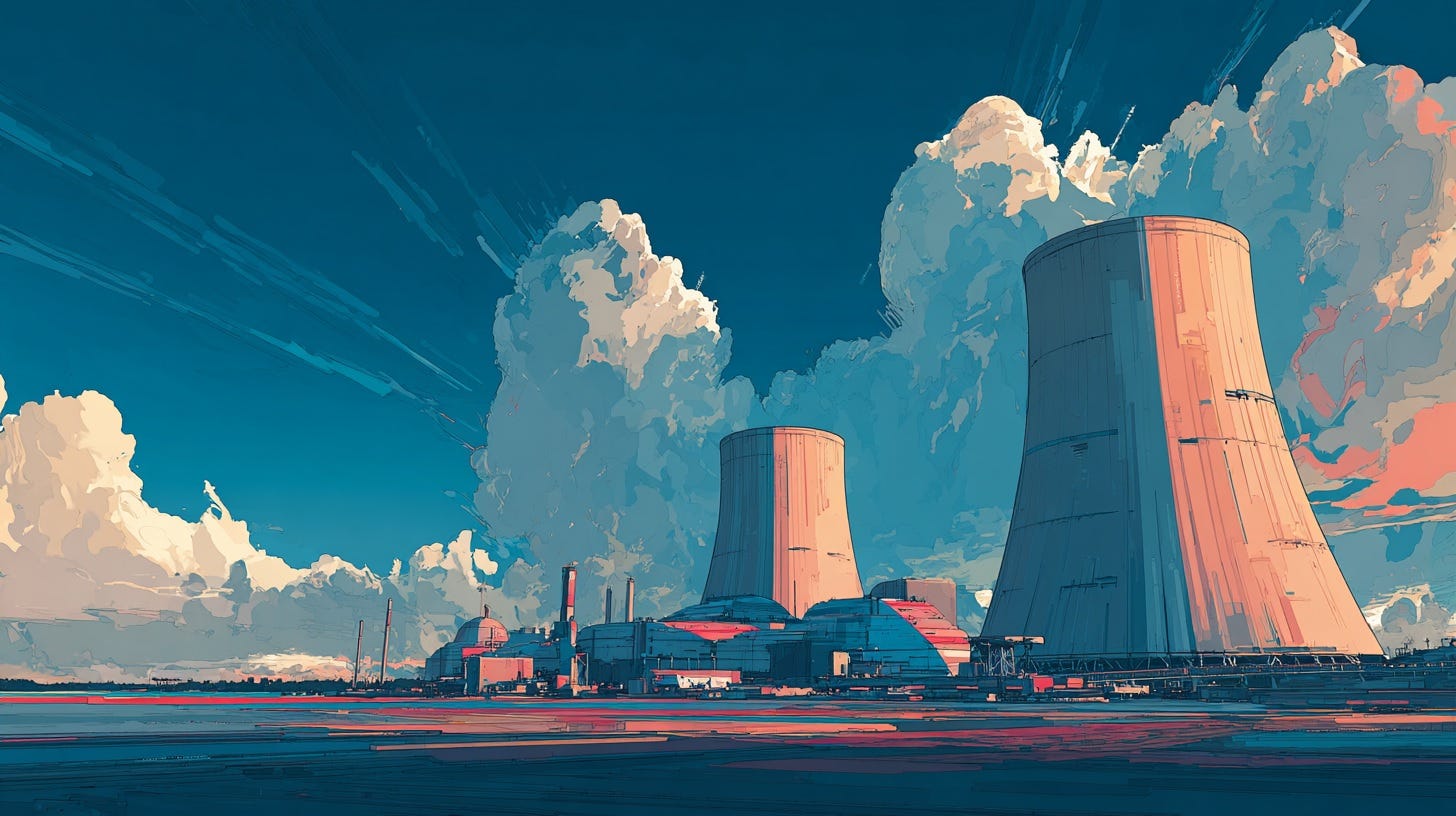Podcast Episode Details
Back to Podcast Episodes
⚛️ Our fission-powered future: My chat (+transcript) with nuclear scientist and author Tim Gregory
My fellow pro-growth/progress/abundance Up Wingers,
Nuclear fission is a safe, powerful, and reliable means of generating nearly limitless clean energy to power the modern world. A few public safety scares and a lot of bad press over the half-century has greatly delayed our nuclear future. But with climate change and energy-hungry AI making daily headlines, the time — finally — for a nuclear renaissance seems to have arrived.
Today on Faster, Please! — The Podcast, I talk with Dr. Tim Gregory about the safety and efficacy of modern nuclear power, as well as the ambitious energy goals we should set for our society.
Gregory is a nuclear scientist at the UK National Nuclear Laboratory. He is also a popular science broadcaster on radio and TV, and an author. His most recent book, Going Nuclear: How Atomic Energy Will Save the World is out now.
In This Episode
* A false start for a nuclear future (1:29)
* Motivators for a revival (7:20)
* About nuclear waste . . . (12:41)
* Not your mother’s reactors (17:25)
* Commercial fusion, coming soon . . . ? (23:06)
Below is a lightly edited transcript of our conversation.
A false start for a nuclear future (1:29)
The truth is that radiation, we're living in it all the time, it's completely inescapable because we're all living in a sea of background radiation.
Pethokoukis: Why do America, Europe, Japan not today get most of their power from nuclear fission, since that would've been a very reasonable prediction to make in 1965 or 1975, but it has not worked out that way? What's your best take on why it hasn't?
Going back to the ’50s and ’60s, it looked like that was the world that we currently live in. It was all to play for, and there were a few reasons why that didn't happen, but the main two were Three Mile Island and Chernobyl. It's a startling statistic that the US built more nuclear reactors in the five years leading up to Three Mile Island than it has built since. And similarly on this side of the Atlantic, Europe built more nuclear reactors in the five years leading up to Chernobyl than it has built since, which is just astounding, especially given that nobody died in Three Mile Island and nobody was even exposed to anything beyond the background radiation as a result of that nuclear accident.
Chernobyl, of course, was far more consequential and far more serious than Three Mile Island. 30-odd people died in the immediate aftermath, mostly people who were working at the power station and the first responders, famously the firefighters who were exposed to massive amounts of radiation, and probably a couple of hundred people died in the affected population from thyroid cancer. It was people who were children and adolescents at the time of the accident.
So although every death from Chernobyl was a tragedy because it was avoidable, they're not in proportion to the mythic reputation of the night in question. It certainly wasn't reason to effectively end nuclear power expansion in Europe because of course we had to get that power from somewhere, and it mainly came from fossil fuels, which are not just a little bit more deadly than nuclear power, they’re orders of magnitude more deadly than nuclear power. When you add up all of the deaths from nuclear power and compare those deaths to the amount of electricity that we harve
Published on 1 month, 3 weeks ago